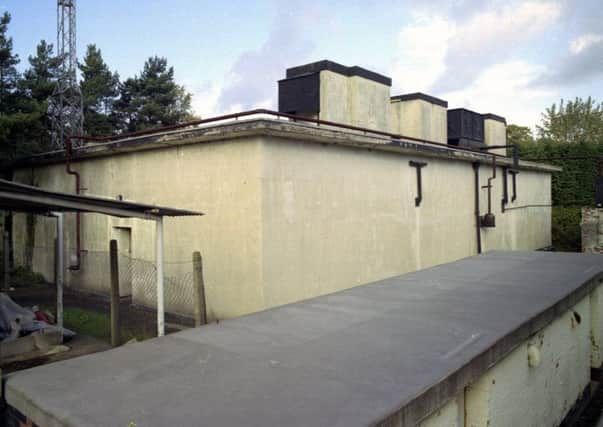Revealed: The secret nuclear bunkers in and around Leeds


Leeds War Room
Contrary to popular belief, there were no public shelters built to withstand nuclear war - it would simply not have been possible to provide enough for the civilian population.
Instead, bunkers were constructed in major cities to hold a select group of government and local authority staff who would run what remained of the country from these underground nerve centres.
Advertisement
Hide AdAdvertisement
Hide AdIn Leeds, War Room Region 2 was built on land off Otley Road in Lawnswood. It was one of a group of 13 two-storey, reinforced shelters built from 1952 onwards, and they were intended to act as communications outposts for hand-picked officials, who would have enough food and recycled oxygen to last several weeks. Each bunker would have been overseen by a Cabinet minister, who would have travelled from London in the days before an attack if it became clear one was imminent.
Staff would have reported to the central Government War Room in London, but they had powers of control if the capital were to be destroyed.
The bunker has a hospital, canteen, telephone exchange, and dormitories, as well as a filtration system to purify radioactive air. Around 100 people inside the bunker would have tried to restore services such as roads and electricity, co-ordinate food supplies and direct police and military teams on the ground.
None of the staff would have been allowed to take family members into the shelter with them - if they refused to go to their post, they were subject to martial law enforced by the regional commander, who had the power to order summary executions for a range of offences.
Advertisement
Hide AdAdvertisement
Hide AdDespite costing around £1million each to build, this first wave of shelters quickly became obsolete as bomb technology became more powerful. The first War Rooms would have been inadequate in the event of a hydrogen bomb strike, and too small for the number of staff that would be needed in a devastating attack. A new network of larger bunkers called Regional Government Headquarters were built instead, and the Leeds bunker was downgraded in status beneath that of the regional nerve centre at Shipton, near York.
Leeds City Council took over the bunker as a local control centre in 1968 and it was in use until 1981, although only the upper level was occupied. It was decommissioned in the 1990s but was one of the final four of the original 13 to remain standing.
It passed into the ownership of a property company and was demolished in 2015, when the site was cleared for housing development. Our reporter was allowed access in 2011.
Leeds Regional Grid Control Centre
The National Grid was also provided with its own shelters in the 1950s to help protect electricity supplies. The Leeds Regional Grid Control Centre was located at Rothwell Haigh, next to the General Post Office repeater station, which would have co-ordinated telecommunications. The site is now used by a construction company.
Royal Observer Corps monitoring posts
Advertisement
Hide AdAdvertisement
Hide AdThe Leeds area had seven volunteer-manned Royal Observer Corps outposts. These were small underground bunkers with living accommodation where the ROC civil defence teams would operate in shifts to identify enemy aircraft flying over Britain, as well as tracking nuclear strikes and the fall-out. Each observation post would be occupied for up to 21 days after an attack.
Over 1,500 of these monitoring posts were built from 1958 onwards, around eight miles apart. They were 25ft in depth and made of reinforced concrete covered by a soil mound. There was a small dormitory for three observers and a chemical toilet.
The posts surrounding Leeds were at Barwick-in-Elmet, Harewood, Guiseley, Bramley, Hunslet, Barkston Ash and Boston Spa. Many have been decommissioned and demolished after the Corps disbanded in 1995, although some are in private ownership.
The post at Barwick is around 50 yards from Leeds Road, and remains intact. It has been privately owned since 2005. Urban explorers who have gained access to the site report that items such as jerry cans, rations, bunks and bedding are still present.